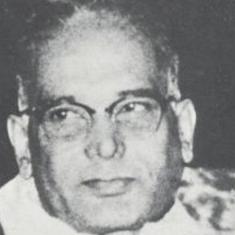Since April 21, the sound of whirring helicopters, heavy artillery fire and loud explosions have punctuated the silence of Karregutta hills along the Chhattisgarh-Telangana border, where arguably the largest anti-Maoist operation launched by Indian security forces is underway.
The security operation comes at a time when the Communist Party of India (Maoist) has repeatedly expressed its willingness to participate in peace talks.
Since March 28, the insurgent group has released four statements asking for a ceasefire. The latest statement, released on April 25, reiterated that the Central Committee, the top decision-making body of the CPI (Maoist), is willing to engage in peace talks.
“Despite the possibility of the problem being resolved through peace talks, the government is attempting to find a solution through violence and oppression,” the statement said. Taking note of the ongoing security operation, it added: “The operation should be halted immediately. The troops should be withdrawn. We request the government to resolve the problem through talks.”
However, the government has chosen to respond with more fire. Thousands of central paramilitary troopers have been sent to encircle the hills where officials believe the top Maoist leadership is hiding.
Two days after the operation was launched, I travelled to the foothills to observe it. On April 23, near Palam village in Telangana, I saw a large pick-up van carrying what appeared to be bodies, wrapped in yellow plastic sheets – possibly, Maoist casualties. The van was being trailed by personnel of the Central Reserve Police Force, riding about 10 motorcycles.
Calls to the police superintendent of Telangana’s Mulugu district yielded no information. “I cannot share anything about the operation as this is an exclusive operation by the Centre,” he said. “The state police are not involved.” The Indian Express reported that nearly 7,000 troops of the CRPF have been deployed for the operation, which officials described as a culmination of the security campaign in which the state claims to have killed over 350 Maoists since last year.
The next morning, I travelled further ahead, along with a journalist from Telangana, on a motorcycle through a rocky forest path. We crossed the border into Chhattisgarh, getting as close to the conflict area as we could.
Sound and fury
The 90-km long Karregutta hills separates Telangana from Chhattisgarh, stretching from Taliperu in Bhadradri Kothagudem district of Telangana to Tarlaguda in Chhattisgarh’s Bijapur district.
On the Chhattisgarh side, the hill range includes Durgampad, also known as Durgaraj pahad, Nambi hills, Nilampad and others. In the foothills lie the villages of Kothapalli, Bheemaram, Chinna Utlapalli, Kasturpad, Pujari Kanker, Usur, among others.
On April 24, two hours after we crossed Kothagoppu, the last village in Telangana, we reached Kothapalli village in Chhattisgarh, which lies in the shadow of Durgampad, a steep rocky hill about 3,000-feet high with a flat top. Beyond it stretches hills on which Chhattisgarh police officials claim several Central Committee members are hiding, along with 350 fighters of Battalion number 1 of the People’s Liberation Guerilla Army. The battalion, which is led by Madvi Hidma, is considered the best fighting force of the Maoists.
An hour and a half after we reached Kothapalli village, around 3.30 pm, we saw two helicopters appear on the horizon. They hovered over the hills, disappearing behind the Durgampad towards Karregutta. For the next 20-25 minutes, we heard near continuous gunfire.
After the choppers left, there was an eerie silence. The gunfire stopped.
Villagers told us this had been the pattern since April 21 when security personnel had first arrived in thousands to camp in the foothills. The helicopters appeared four times a day – at roughly 7 am, 11 am, 3.30 pm, and 6 pm – accompanied with gunfire, the villagers said.

We stayed in Kothapalli, which is home to about 45 families.
The next evening, on April 25, Durgampad appeared to be under siege. Around 8.30 pm, we saw the hill lit up briefly, followed by the sound of explosions at the tail end, where Bheemaram village is located. The shelling was near-continuous and lasted nearly two and a half hours until 11 pm. Several explosions took place at brief intervals, and we saw what seemed to be a missile blast at the edge of the Durgampad with the fire blazing for a few seconds before dying out.
After the shelling ended, the hills fell silent again, barring the dull sound of drones, which could be heard throughout the night. We spotted the last drone around 3.40 am on April 26.
The firing resumed close to the break of dawn. Between 5.25 am and 7.10 am, we heard explosions at intervals of 2 minutes-5 minutes. Two choppers appeared around 7.30 am, coming from what appeared to be the Pamed area. Once again, heavy artillery sounds accompanied them, until they left about 25 minutes later.
What villagers said
Next morning, the residents of Kothapalli huddled together, some near the village well, others near the handpump, while a few stood under the tamarind trees. They looked tense. “What can we do?” said an elderly man. “We can’t go anywhere.”
The villagers had spread out their meagre gatherings of mahua flowers for drying. “This is all I could gather this season,” said a woman whose house overlooked the hill.
The security operation has coincided with an economically crucial season when people in the villages collect forest produce like mahua flowers and tendu leaves. “This year we haven't been able to gather mahua flowers despite a good harvest,” said Surya, an elderly man from the nearby Laxmipuram village. He added that in another five days, it would be time to pluck tendu leaves. He expressed the hope that whatever was happening on the hills would get over soon. “I miss the calling of the forest," he said.
As we tried to venture further ahead to Bheemaram village, we were stopped by security personnel, who emerged out of the bushes, asking us to return.
A commandant insisted we leave the area since a major security operation was underway. He said it was not possible to say how long the operation would last. “We get our commands from Delhi,” he said.
Security personnel in large numbers have been deployed in several batches across the large stretch of the hills. "We cannot reveal the exact numbers, but we have been here for the last four days in large numbers", said a CRPF jawan.
Soaring temperatures
By April 26, the temperature was touching 42 degree celsius in Kothapalli. The temperature on the dry rocky hills must be higher by several degrees, the villagers said.
That day, several CRPF jawans appeared in the village to gather water from a solar-powered hand pump. The village has three solar-powered hand pumps, which supply water around the clock.
As we made our way back to the Telangana border town of Venkatapuram, we saw truck loads of water bottles being transported by road.
Several news reports have appeared about dehydrated jawans being hospitalised in Venkatapuram and Bhadrachalam.
At the Venkatapuram community health centre, a 30-bedded hospital, eight beds were occupied by jawans. A CRPF doctor deputed to monitor the health of the jawans said there was nothing serious – just a few cases of dehydration, abrasion on shoulders due to long walks with bags, and stomach problems.
At the end of five days of operation, Chhattisgarh police claimed to have killed three women Maoists. On April 28, they were identified as members of Battalion number 1, carrying a reward of Rs 8 lakh each.
With reporting assistance from Billa Tarun Kumar.










